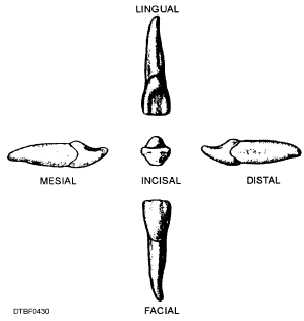
Figure 4-30. - Surfaces of a mandibular central incisor.
Lingual Surface - The lingual surface is concave from the incisal edge to the cervical margin.
Root Surface - The root is slender and extremely flattened on its mesial and distal surfaces.
MANDIBULAR LATERAL INCISORS
The mandibular incisor (tooth #23 or #26) illustrated in figure 4-31, is a little wider mesiodistal than the mandibular central incisor, and the crown is slightly longer from the incisal edge to the cervical line.
Facial Surface - The facial surface is less symmetrical than the facial surface of the mandibular central incisor. The incisal edge slopes upward toward the mesioincisal angle, which is slightly less than 90°. The distoincisal angle is rounded. The mesial border is more nearly straight than the distal border.
Lingual Surface - The lingual surface is similar in outline to the facial surface. The incisal portion of the lingual surface is concave. The cingulum is quite large but blends in smoothly with the rest of the surface.
Root Surface - The root is single and extremely flattened on its mesial and distal surfaces.
MAXILLARY CUSPIDS
The maxillary cuspid (tooth #6 or #11) is illustrated in figures 4-32 and 4-33. The maxillary cuspid is usually the longest tooth in either jaw. Since it resembles a dog's tooth, it is sometimes called the canine.
Facial Surface - The facial surface of the crown (fig. 4-33) differs considerably from that of the maxillary central or lateral incisors. In that the incisal edges of the central and lateral incisor are nearly

Figure 4-31 - Surfaces of a mandibular lateral incisor.
Figure 4-32. - Surfaces of a maxillary cuspid.
Continue Reading